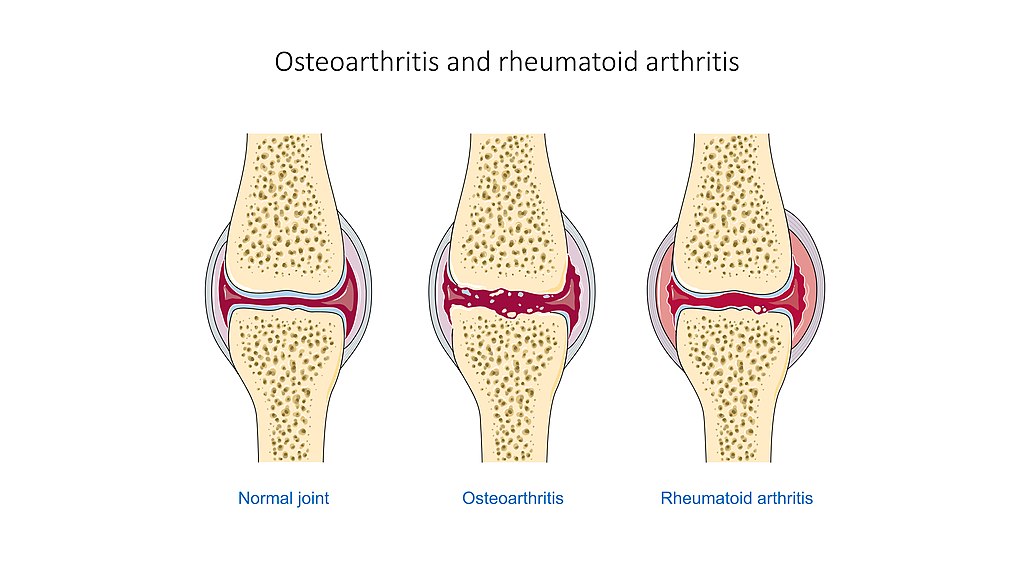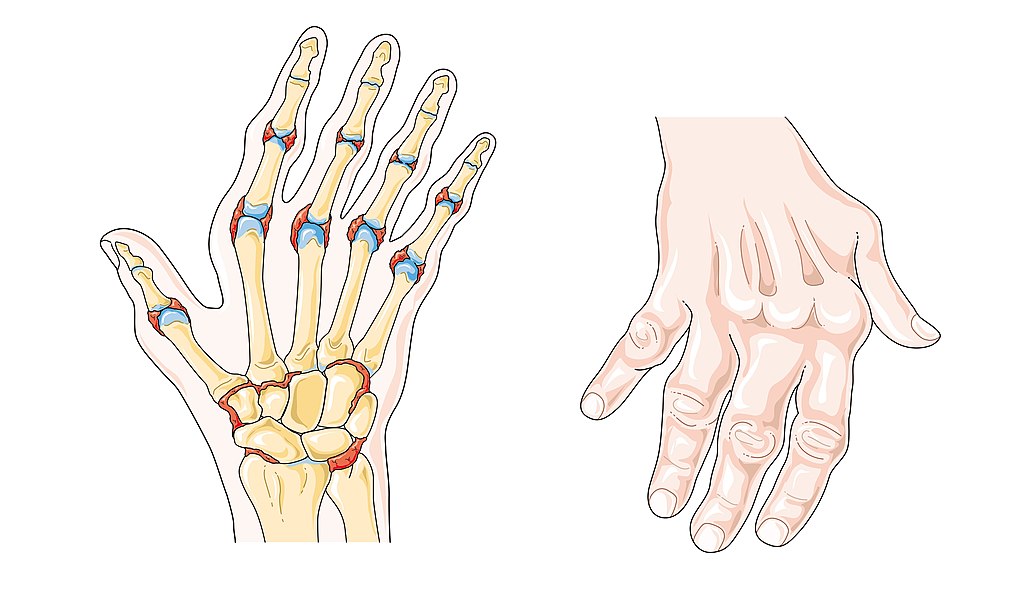Ask an arthritis sufferer, ‘What are the best exercises for arthritis?. They will likely say, “the ones I don’t have to do”!
The pain and stiffness of arthritis can be exhausting. Sometimes the thought of bending over to put your socks on can be overwhelming.
But exercising is vital to your health. The right exercises will decrease pain and stiffness. They will also improve your flexibility and prevent weight gain.
Do not worry. The best arthritis exercises will not hurt you. But they will improve your quality of life.
We will look at the different types of arthritis. Then I am going to help you understand what exercises are best for you.
You will also find some of the best exercises for your arthritis right here.
What is Arthritis

Arthritis is the swelling and tenderness of various joints in the body. The most common symptoms are joint pain and stiffness that may worsen with age.
There are two types of arthritis – osteoarthritis and rheumatoid arthritis. However, there are over 100 kinds of arthritis that may fall under these two types.
It is important to know which type of arthritis you have to determine which treatments and exercises are best for you.
Osteoarthritis
Osteoarthritis is the most common type of arthritis, affecting over 27 million Americans. It doesn’t occur overnight; it develops over months or years. Most people over the age of 60 have some degree of osteoarthritis.
Osteoarthritis occurs when the pillowy, protective cartilage that cushions your bones wears down over time. Pain is a result of bone rubbing directly on the bone.
Osteoarthritis is often called a degenerative joint disease or ‘the wear and tear’ arthritis.
It can damage any joint. But it most commonly affects joints in your hands, knees, hips, and spine. If you have osteoarthritis in your hands, it usually affects the joints closest to the tips of your fingers.
It is common to experience mild stiffness when you first wake up. But this stiffness generally disappears right after you get moving. You may also experience this same stiffness throughout the day if you are inactive.
Damage to any of these joints cannot be reversed. But the symptoms can usually be managed. One way to manage the symptoms of pain, stiffness, and mobility is with movement and exercise.
Here is a tip. If you spend considerable time typing at your desk, you may notice pain in your neck and wrists. It can help put a sticky note on your computer screen that says, “It’s time to move!”
Some physiotherapists recommend setting alarms in your cell phone to go off every half hour during your desk time. These alarms serve to remind you to adjust your posture and spend some time moving your joints.
Rheumatoid Arthritis
Rheumatoid arthritis (or RA) is an autoimmune and inflammatory disease. This means that your immune system attacks healthy cells in your body by mistake. This results in pain, swelling, and stiffness that can last throughout the day.
Rheumatoid arthritis affects joints in the knees, hands, and wrists. The lining of these joints become inflamed, resulting in damage to the joint tissue. In more severe cases, it can cause deformity of the joints.
RA can also affect other tissues and organs such as the eyes, heart, and lungs.
Some of the first symptoms of Rheumatoid Arthritis are unexpected. Flu-like symptoms such as fatigue, fever, weakness, and minor joint aches may be the early signs that send someone to the doctor.
With rheumatoid arthritis, there are periods of remission when few or no symptoms exist. There are also periods called flare-ups when symptoms become worse.
The Benefits of Exercise for Arthritis
When you suffer from pain and stiffness, it is natural to think that exercise may result in more pain and suffering. But doing the right kind of exercise is the key to reducing the disability from arthritis.
The right exercises will:
- increase strength, which means your joints will have improved support.
- Increase flexibility, which will provide better joint function.
- Reduce fatigue and depression.
So, if you move more, you will feel better.
Research shows that mild to moderate exercise can benefit anyone with arthritis. But everyone has unique symptoms, limitations, and needs. So, you and your healthcare professional should design a care plan and exercise that is best for you.
The following types of exercises play a significant role in helping to relieve the most common arthritis symptoms.
Range of Motion Exercises
Having full range of motion means that you can move your joints through the full motion they are intended to have.
There are several range-of-motion exercises to choose from. So, I will focus on exercises for the hands, hips, and knees.
Hand Exercises
The Arthritis Society has provided this video demonstrating three-hand exercises, which can improve grip and overall strength. If you can do each of them two or three times a day, you should see some improvement.
Hip Exercises
Your hips help propel your leg forward, backward, and side to side. They also allow you to squat or sit. Doing these exercises will assist in keeping your hip joints lubricated and mobile while lessening pain.
Front to Back Leg Swings:
- Hold on to a wall or stable surface, stand on one leg, and slowly swing the other leg forward and backward.
- Do not arch your back.
- Keep your leg straight as you swing it back.
- Do 15 with each leg.
Sideways Swing:
- Swing your leg in front of you from side to side.
- Lead with your heel as you swing across your body. Keep your toes on the stabilizing foot forward.
- Do not allow your torso to twist. Do 15 per leg.
Soften the Soft Tissue:
Tightness in the soft tissue covering and surrounding the hip joint can cause range of motion issues.
- To loosen the soft tissue around your hip and improve flexibility, you can massage the iliotibial bands outside of your upper thigh, hip adductors in your inner thigh, and your hamstring muscles.
- Use a small ball like a baseball, golf ball, tennis ball, or lacrosse ball to massage these areas.
- Apply moderate pressure and roll the ball up and down over the muscle or ligament, stopping at sensitive spots.
- Do 10 rolls per area.
Back Exercises
Back exercise may seem out of the question when you are in a lot of pain. But once you get the okay from your doctor, doing these exercises may really help decrease your pain and stiffness.
Posture Check
- Imagine that you have a ribbon attached at the top of your head. Now imagine that someone is pulling it straight up.
- While you are standing nice and tall, roll your shoulders up, back, and then down.
- Relax for 5 seconds and then repeat 4 more times.
Side Stretches
- Side stretches with or without light weights gently work your back muscles without putting too much strain on stiff joints.
- Standing straight and in place, reach down the side of your body.
- Stretch as far as you can without pain. Then slowly raise back up.
- Perform this exercise 10 times on each side.
The “W” Stretch
- A “W” stretch is an easy arthritis-friendly exercise.
- Place your arms to your sides with elbows in and palms facing out.
- Your elbows should make a “W” towards your waist.
- Gently move your elbows back until you feel your shoulder blades squeezing together.
- The Arthritis Foundation recommends holding this position for three counts before releasing and repeating.
Soft Tissue Massage
- Place a tennis or lacrosse ball inside a sock.
- Find a wall to lean back on.
- While holding onto the top of the sock, place the ball between you and the wall. Make sure the ball is resting on the area behind your shoulder that is sore.
- With mild pressure, move your body around so that the ball is massaging the sore area.
- Do this once or twice a day.
Endurance Exercises
Walking is absolutely the best endurance exercise for arthritis. It is a low impact exercise, so it is easy on the joints. Walking improves cardiovascular health and helps to maintain a healthy weight. We all know that extra weight puts more stress on our joints.
Please take a few minutes to read my blog on the Five Fabulous Ways Walking Improves Your Health. It is an excellent guide for learning the proper way to walk and prevent injury. Once you gain some strength, you can add some interval walking to increase your aerobic activity.
Strength Exercises
When your muscles are strong, your joints become more stable and properly positioned.
Have you heard of isometric exercises? These exercises cause a muscle to contract with minimal body movement. In other words, you tense a muscle, hold it, then relax it.
Isometric exercises have some great benefits. You do not need any equipment. It increases your strength, and it also improves your flexibility! They are also much easier on your joints than ones that require weights.
Isometric exercises are commonly used in rehabilitation programs. Many physiotherapists recommend them for people with arthritis.
Here is a friendly reminder – please discuss any exercise plans that you have with your doctor.
It is essential to choose the right exercises for you. It is also important to do the exercises correctly. If you have a budget for it, meet with a physiotherapist or a trainer. Make sure you are doing the right exercises and doing them the right way.
Here are a couple of isometric exercises to get you started.
Isometric Chest Press
- Place your arms at chest level.
- Press the palms of your hands together as hard as you can without feeling pain.
- Hold for five seconds
- Rest for 5 seconds
- Repeat five times
- If this exercise makes your joints hurt, try another isometric exercise.
Isometric Thigh Exercise
- Sit on the floor with your back straight.
- Bend one leg at the knee with your foot planted firmly on the floor.
- Keep the other leg straight.
- Tighten the thigh muscles of your straight leg as hard as you can.
- Count to 5
- Relax for 5 seconds
- Repeat 5 times.
- Switch legs and repeat.
How to Get Started
It is always important to speak with your doctor and an expert before you begin any exercise program. But it is especially important if you have arthritis.
What helps one person can cause increased pain and stiffness in another. So, you must find out what exercises are best for you.
One key is to start out slow. A few minutes a day may be all you can do at first. Work toward increasing the time you spend on your daily exercise routine.
Do not give up on your exercise plan. You and your health care professional have developed your plan. If you experience an increase in pain, swelling, or stiffness while doing these exercises, call your healthcare team. Communicate regularly to discuss what is and what is not working.
As your flexibility, endurance, and strength improve, so will your happiness and quality of life.
Final Thoughts
Arthritis can have a strong negative impact on your quality of life if left untreated.
Medications can reduce symptoms and slow disease progression. But you must also keep your body moving. With the right exercise plan, you will find that you can do more and feel more energetic.
Don’t give up on exercise. It will take time to see the results and benefits of your efforts. But I promise you, exercise will help.
I want you to do something right now. Stop and focus on where you are feeling pain and stiffness at this very moment. Now spend 5 minutes right now to try one or two of the exercises I have shown you.
Please send me a message to tell me where you hurt and what exercises you tried. Make exercise part of your daily routine and habit. Your body will thank you!

